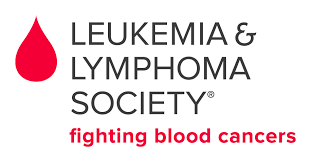Acute myeloid leukemia (AML) is a cancer of the bone marrow and blood that progresses rapidly without treatment, resulting in the production of under-developed cells that cannot carry out their normal functions. AML is often treated with therapies in clinical trials.
If you have been diagnosed with AML, it is important to talk to your doctor about your diagnosis, what your test results mean, all your treatment options and what you can expect from treatment.
How Does AML Develop?
Stem cells in the bone marrow form red blood cells, white blood cells and platelets When the DNA of a developing stem cell is damaged, it is called an acquired mutation. When this happens, the damaged cell becomes leukemic and then multiplies into billions of other cells, called leukemic blasts.
Leukemic blasts do not function normally and also block the production of normal cells. They also grow rapidly and survive longer than normal cells in your blood. As a result, the number of healthy blood cells in your bloodstream becomes lower than normal.
Patients with AML may develop conditions related to the low number of normal blood cells, such as:
- Anemia - a condition that occurs when there are a low number of red cells in the blood, causing fatigue and shortness of breath.
- Neutropenia – a condition that occurs when there are a low number of white cells, causing the immune system to be ineffective in guarding against infection
- Thrombocytopenia – a condition that occurs when there are a low number of platelets, causing bleeding and easy bruising
- Pancytopenia – a condition when there are low numbers of red blood cells, white blood cells and platelets
Signs & Symptoms
The signs and symptoms of AML are also common to other, less serious illnesses. However, if you experience any of the following symptoms, you should plan a visit to see your doctor.
- Loss of well-being
- Become tired easily
- Shortness of breath during normal activities
- A paler than normal complexion
- Bruising for no apparent reason
- Pinhead-size red spots on the skin
- Prolonged bleeding from minor cuts
- Mild fever
- Swollen gums
- Frequent minor infections
- Loss of appetite and weight loss
- Discomfort in bones or joints
- Discomfort or a dragging feeling on the upper left side of your stomach (caused by an enlarged spleen)
- Pain on the upper right side of the stomach (caused by an enlarged liver)
To learn more, visit The Leukemia and Lymphoma Society.
 Content provided by:
Content provided by: